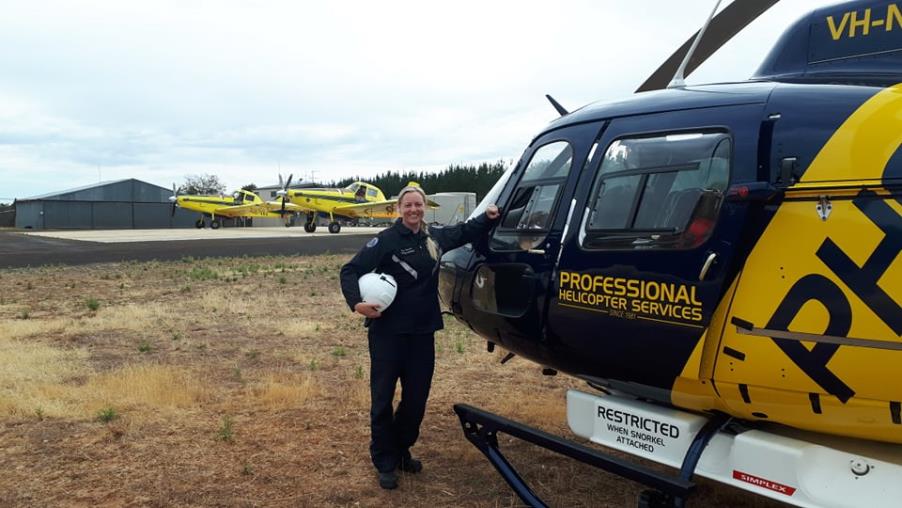
CFA’s Kelly Krajnc couldn’t have dreamed of a more intense start to her new role as an air attack supervisor.
Kelly and Parks Victoria’s Rhianna Burns became Victoria’s first female air attack supervisors when they and four others were accredited just a couple of months ago.
In her first deployment, Kelly was sent to the Langkoop/Poolaijelo fire which started on the South Australian side of the border during the afternoon of New Year’s Eve and quickly spread across to Victoria where it went on to burn more than 7300ha.
It’s Kelly’s role as a volunteer with the CFA District 13 Headquarters brigade that has allowed her to pursue roles in aviation.
She had undertaken the role of air observer for some time when she put her hand up for the air attack supervisor training.
“The main difference is that as an air observer, you’re operating at a higher altitude feeding back information to the ICC or the fireground – how big the fire is, how fast it’s moving, assets under attack, that sort of thing, whereas an air attack supervisor looks after the tactical firefighting in the air,” she said.
The Langkoop/Poolaijelo fire certainly put her tactical skills to the test, with the fire burning in grasslands, pine, red gum and bush vegetation.
Several water-bombing aircraft, a Helitak and Large Air Tanker worked side by side with South Australian aircraft to support the on-ground fire crews.
“It’s like a strike team in the air and I’m their strike team leader,” she said, we are just another tool for our firefighters to utilise.
Incident Controller Mark Gunning was full of praise for the air support received and in particular, the role played by CFA’s newest air attack supervisors.
“She stood up unbelievably,” he said. “I’ve seen much more experienced air attack supervisors baulk at the challenge of that many aircraft and that dynamic a situation,” he said.
In the air during such a large and fast-moving event, decisions have to be made very quickly.
“We knew a south-westerly wind change was coming through and it was going to change the direction of the fire, so the plan was to build a retardant line ahead of the change,” she said.
“We found a track and we dropped the retardant on the burn-side so that the track plus the extra line of retardant would slow the fire right down allowing it to burn it’s self out – it was very successful.
“We also dropped retardant on grass and you can see the effectiveness of where it burnt right up to the retardant line before dying out.”
Kelly said daily debriefs following each shift were an opportunity to identify what had gone well and where improvements could be made for the following day.
“All of my instructors – from multiple agencies; CFA, FRV, DELWP and Parks– have also been really supportive and I couldn’t have done it without their support. They called me every day to debrief with me, check on my welfare and praise the work I had done.”
This week, she will also undertake a formal after action review with her mentor, CFA air attack supervisor, Commander John Katakouzinos, who said this review gives us an opportunity for continuous learning and improvement. It also allows us the fill in any training gaps we may identify.
Kelly said that despite being one of the two first female air attack supervisors, she and Rhianna were no different to any other air attack supervisors.
“I wasn’t treated any differently throughout the course – I wasn’t favoured or pushed any harder than anyone else. The people I did the course with acknowledged we had to jump through the same hoops they did and they became our biggest supporters,” she said.
| Submitted by |
Liselotte Geary |